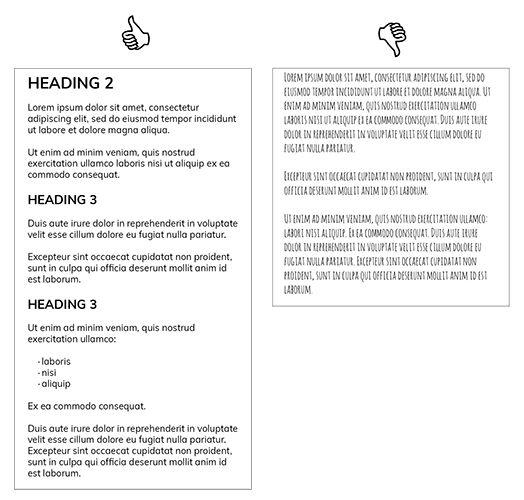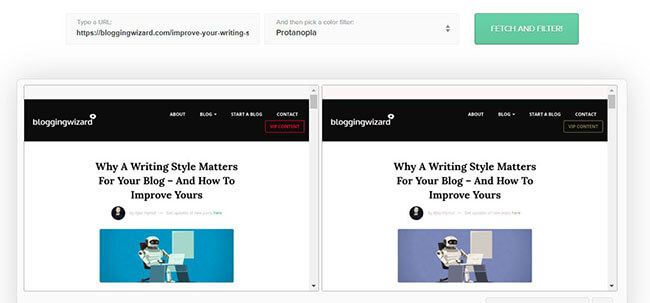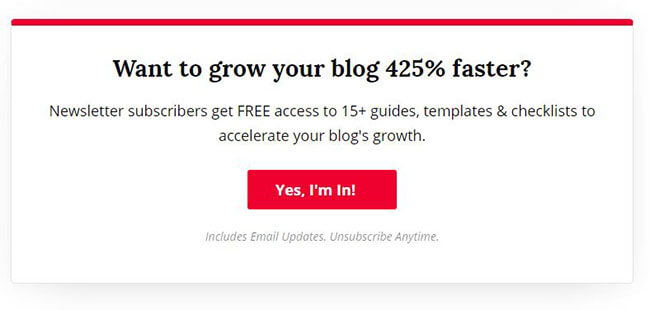How To Format Your Blog Posts To Keep Your Readers Engaged

Chances are, someone has landed on your blog and decided to click away without even reading your blog articles. It happens to even the best writers.
While that thought is disheartening, would you feel a bit better if I told you that by re-formatting your blog posts you could increase the likelihood that your readers will stay a bit longer to read what you have written?
A great format can help guide your reader from the beginning to the oh-so-important call-to-action within your post, and in this article, you are going to learn how to craft blog posts with a winning format so you can increase your conversions on every single post you write!
Why is formatting important?
Is 15 seconds enough time for your readers to devour every word of your blog posts and sign up for your email list? I’m going to take a big guess and say that no, it is not enough time.
With users only spending an average of 15 seconds on a website, it’s not only important that you capture their attention right away, it’s crucial!
So while you’ve crafted the perfect headline and you’ve written a quality piece of content, if your formatting is all sorts of chaos, your reader will likely jump ship before they even give your content a shot.
The right format for your blog posts will help your readers consume your content easier, stay for longer on your website and ultimately, convert on your call-to-action!
So whether you want to make more sales or get more email subscribers, let’s talk about how the right blog post format can help you with your goals.
The difference with blog posts
The way we consume blog articles differs from how we read white papers or case studies.
When reading blog articles, we like to scan.
There are thousands of articles we can choose from to read, so when we land on a blog article, the first thing we tend to do is to do a quick scan to make sure the content is going to answer our question.
Think of this as the “speed dating” of the blogging world.
If your reader has done a quick scan and they haven’t been compelled to read more, they’ll click on the back button and find another piece of content to read.
There’s plenty of fish in the sea when it comes to blogging, so let’s dive straight into some key areas you can focus on to improve the format of your articles.
6 tips for formatting your blog posts
1. Write shorter paragraphs
If you tend to write formal documents, writing shorter paragraphs might seem foreign to you at first.
Using shorter paragraphs will increase the whitespace in your blog posts. Whitespace is essentially the space around and between your content.
If your articles don’t have lots of whitespace, the content begins to feel cramped. A lack of whitespace tends to make it hard for your reader to stay focused and read your entire article.
There is no rule to how long your paragraphs should be, but anywhere from 1-3 sentences works well for keeping a good balance of whitespace.
2. Perfect your writing style
When you’re able to nail your writing style, you’ll be able to keep your visitors around for longer because they won’t want to stop reading.
The longer you can keep your readers interested, the more likely you can get them to convert.
Have you ever found yourself clicking around from article to article within someone’s blog because their writing has you hooked?
On the other hand, I’m sure you’ve also clicked the back button within seconds because whatever you were reading had you feeling like it just wasn’t written for you.
You’re going to need to understand your audience and what they want to read.
Are they looking for something with a serious and formal tone? Or do they prefer conversational pieces with a twist of humor?
When you perfect your writing style, you’ll be able to increase the number of people who choose to stick around past that 15-second mark I mentioned earlier.
3. Use proper headings
Headings are a great way to break up your text, add more whitespace and help your reader absorb essential information from your article.
By breaking up your article into proper sections with headings, your reader will have an opportunity to do a quick scan and (hopefully) decide that your article is one they want to continue to read.
Your headings should be clear and concise and let the reader know what they will be reading in the following paragraphs.
Headings aren’t just great for your reader; search engines love them (when used correctly), so let’s do a quick crash course on semantic headers, so you know whether or not you are using them correctly.
For SEO purposes, search engines like you to organize your headings in a specific way.
The headings are as follows:
- H1
- H2
- H3
- H4
- H5
Your blog’s title should always be classified as an H1 heading automatically, and you should never have more than one H1 heading in your blog posts.
If you blog using WordPress, your WordPress theme should automatically apply the H1 heading to your blog titles so you don’t need to worry too much about this and can ignore “heading 1”.
When using WordPress, you can set your headings through two different spots within your editor:

Headings give your article hierarchal structure. For example, your first heading always needs to be labeled as an H2 header. If you have any subheadings under an H2, it must be an H3.
If you have subheadings under an H3 heading (I think you know where I’m going with this), you will want to use an H4!
As a bonus, your headings also hold more weight than your paragraph text for SEO purposes, so if possible, try to incorporate some of your keywords into your headers.
4. Break up text with bullet points
Bullet points are useful for taking long paragraphs that are heavy with information and turning them into bite-sized content that your audience will be able to read in a snap.
Not only that, if your readers are scanning, the contrast between the bullet points and the paragraph text will stand out so you can ensure they won’t be missing any important information.
5. Evaluate your typography and color palette
While you might not consider yourself a designer, there are a few different aspects of design that will improve the readability of your blog posts:
- Typography
- Colors
The typography of your blog is the fonts you have on your website. Certain fonts work great for websites while others are hard to read.
You should also take into consideration the size of your text. If it’s too small, your readers might click away if they have a hard time reading it.
A quick and simple test is to ask someone to go to your blog and let you know if they have a hard time reading it.
Below is an example of hypothetical blog post excerpt with great typography and great whitespace. The other example, however, is incredibly hard to read. Both examples use the same passage of text, but one is much easier to gather information from than the other.

On top of the font and size of your text, you should also take into consideration the color!
Your text can easily blend into the background of your website if it doesn’t contrast enough. Black text on a white background is the safest bet when it comes to contrasting colors.
People who are visually impaired or colorblind might not be able to read your content if there isn’t enough of a contrast.
A great tool to help determine if the colors you have chosen for your blog will be acceptable for all different eyes is Toptal’s Colorblind Web Page Filter:

When you run your website through their filter, you’ll be able to choose from different types of colorblindness to see if any buttons, text or CTA’s blend together.
6. Emphasize your call-to-action (CTA)
The CTA in your blog posts will guide your readers onto the next step.
Do you want them to sign up for your email list? Should they fill out a contact form to get in touch with you?
There are many different CTA’s your blog posts can have and it’s your job to make sure the CTA is clear and concise.
Blogging Wizard’s CTA has a clear header and contrasting colors that pop off the page:

There will always be people who will scan your content and won’t read it in its entirety, which is fine! Make your CTA stand out so that even those who are scanning through still see it, and possibly take action.
Note: If you want an easy way to add CTA’s to your website, be sure to check out our post on WordPress call to action plugins.
Edit and test your articles
When you go back and edit your articles, it can be easy to miss simple errors.
Grammarly is a great tool (with a free plan and regular discounts available) that can act like your personal editor to help you catch mistakes you might have otherwise missed.
Once you have edited your article, it’s almost time to hit publish. But not before you run it through a couple more tests.
The Writer’s Readability checker tests your content against three different scores:
- Flesch-Kincaid Reading Ease Score
- Gunning Fog Score
- SMOG Index
These various tests will help you understand if your content is too complicated for your audience by looking at the number of syllables in your words and your sentence length.
The above tests will help guide you, but you should still use your best judgment. Words with more syllables aren’t always difficult words, and a longer sentence doesn’t necessarily mean it’s a run-on.
While these tests can be beneficial, they aren’t as helpful as having a real set of eyes look over your work, which brings us to the final point.
Have someone you trust scan through your work, or do it yourself, and see what you can gather from your article in only 15 seconds.
Put yourself in the shoes of someone who is landing on your article for the first time.
Are 15 seconds enough to gather key information and answer your reader’s query? Do you think you’ll be able to convince them to continue reading?
Conclusion
Improving the format of your blog posts can encourage your visitors to read more of your content and stay longer on your blog.
By using the above tips, you’ll increase the likelihood of your audience consuming the content you write and converting into loyal readers!

